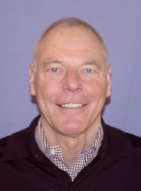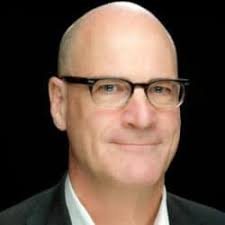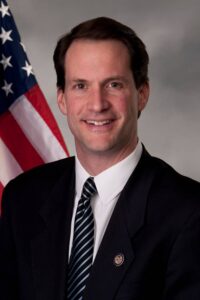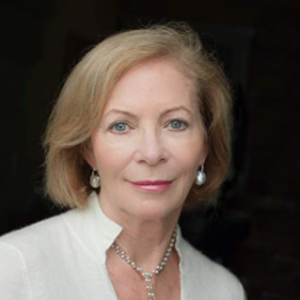
Jeff Bergner is the author of The Vanishing Congress: Reflections on Politics in Washington. He formerly served as chief of staff for Senator Richard Lugar, staff director of the Senate Foreign Relations Committee, and Assistant Secretary of State for Condoleezza Rice. Jeff founded and ran a successful Washington, DC, lobbying/ government relations firm and has served on policy advisory committees for several presidential candidates.
He received his B.A. degree from Carleton College, and M.A. and Ph.D degrees in political philosophy from Princeton University. He has taught at the University of Pennsylvania, Georgetown University, and Christopher Newport University, and currently teaches as an adjunct lecturer in the Batten School of Public Policy at the University of Virginia.
Jeff speaks and writes widely on political issues, and is the author or editor of five previous books and numerous scholarly articles. His opinion pieces have appeared in the Washington Post, the Chicago Tribune and the Wall Street Journal, and his occasional articles for the Virginian-Pilot are circulated nationally by the Tribune Syndicate.
Arranged by Harry McLachlin
Bryan Hooper’s notes on the talk:
Jeff Bergner, spoke to us from Virginia about his experiences working with Congress, and shared his views on how to improve its efficacy. He stated that opinion polls which measure the popularity of various institutions show the current favorable view of Congress now stands at a mere 13%, lower than the majority of other entities polled, although he noted most of us have a much more positive view of our own individual representatives and senators. In examining the reasons for the overall lack of popularity, Jeff identified several areas where Congress has problems operationally: for instance, there were approximately 12,000 bills introduced in the last Congress – the highest in history – and only 2% were enacted. He attributed the large number of bills put forward as driven by individual members’ attempts mainly to demonstrate a position on issues to their constituents, both locally and nationally, to enhance their own reputations. He noted also that Congress has increasingly allowed the executive branch of government to manage many important topics, such as immigration, healthcare, war powers and fiscal matters. In essence, he concludes, Congress is not working as intended. He attributes this not to the lack of talented people who serve – he believes they are in the main high caliber – but rather to the increasing polarization of opinions over this current century. He noted that history indicates that when one party is the majority then gridlock does not occur and action happens, but there have been nine times in the past eleven elections when either the house or the senate or the presidency has changed hands and prevented one party dominating affairs.
The prospects for bipartisanship remain dim. Jeff averred that there are four areas that needed reform to ameliorate the situation.
First, fix the budget process. The budget act of 1974 established procedures to follow to meet deadlines to produce an approved budget on time for the start of the next fiscal year in October. Failure to meet those deadlines is common as the entities involved in each step of the process inevitably cannot resolve differences. In particular, he laid blame on the Authorizing Committees who are meant to establish a basis for operating programs and provide guidance to the Appropriations Committees regarding the appropriate levels of funding for programs. Many draft bills sent to the twelve Appropriations Committees frequently do not receive approval, with the notable exceptions of military budgets and congressional expenditures (no president ever withholds their funds!). The process inevitably ends up with the budget being bundled into continuing resolutions as a series of short-term bills that may need to be re-visited and resurrected every few months.
The excess number of staff involved in Congress, about 10,000 for 535 members, is the second driver of stasis. Staff numbers drive the bills and the process: perhaps 20% fewer might lead to a 20% improvement in results.
The third item he highlighted was the filibuster with respect to pending bills. Jeff made the point that bills can pass the senate on a simple majority, but reaching that point is made difficult by the rules that at least 60 votes are needed to cut off debate, so a filibuster can prevent bills being advanced to the point of even having a debate with amendments considered. Jeff argued that the filibuster should be changed so that only a simple majority vote should be required on a motion to proceed to consideration of a bill.
Finally, he noted that, consistent with his views, the filibuster rules have been amended by both sides for nominees required to be confirmed by the Senate, including nominations for Supreme Court justices, allowing nominations to proceed to closure upon a majority vote.
Jeff’s talk and the resultant interesting series of questions can be viewed by clicking on the following link: https://youtu.be/hiQwUSOJLBE.
 Bert von Stuelpnagel will discuss the family background, personality, and disastrous rule of Kaiser Wilhelm II. Perhaps the most colorful historical figure opening the door to the 20th Century was the vainglorious Wilhelm II. How do you explain the fact that the eldest grandson of Queen Victoria led Germany into a deadly fight with the countries governed by his cousins King George V and Tsar Nicholas II? The Great War has been analyzed and discussed in thousands of works, but to this day many questions remain.
Bert von Stuelpnagel will discuss the family background, personality, and disastrous rule of Kaiser Wilhelm II. Perhaps the most colorful historical figure opening the door to the 20th Century was the vainglorious Wilhelm II. How do you explain the fact that the eldest grandson of Queen Victoria led Germany into a deadly fight with the countries governed by his cousins King George V and Tsar Nicholas II? The Great War has been analyzed and discussed in thousands of works, but to this day many questions remain.


 Tim Love is former Vice-Chairman of Omnicom Group, a leading global advertising and marketing services company. He is a James Webb Young Fellow with a Masters in Communication from the University of Illinois, and has a Bachelor of Science in Business Administration with a minor in Fine Arts from Miami University in Ohio.
Tim Love is former Vice-Chairman of Omnicom Group, a leading global advertising and marketing services company. He is a James Webb Young Fellow with a Masters in Communication from the University of Illinois, and has a Bachelor of Science in Business Administration with a minor in Fine Arts from Miami University in Ohio. Jim Himes represents Connecticut’s 4th District in the United States House of Representatives where he is serving his seventh term. He serves as the Chair of the National Security, International Development and Monetary Policy Subcommittee of the House Financial Services Committee.
Jim Himes represents Connecticut’s 4th District in the United States House of Representatives where he is serving his seventh term. He serves as the Chair of the National Security, International Development and Monetary Policy Subcommittee of the House Financial Services Committee. Patricia Walsh Chadwick was born in Cambridge, Massachusetts in 1948. She will speak to us about her upbringing in Cambridge at Saint Benedict Center, which was established in 1940 as a community of devout Catholics committed to fellowship and faith but developed over two decades later into a rigid, sequestered religious sect headed by an excommunicated priest and his cohort, a staunchly Catholic married woman with a puritanical streak. Patricia was one of 39 children raised in this cult and she has written on her experience in Little Sister: A Memoir, a story of indoctrination, fear, suffering, resilience, love and grace. In her presentation she will discuss how she rose above the shame and demons of her past, built a prosperous career in finance and investments, married and raised two wonderful, now adult, children.
Patricia Walsh Chadwick was born in Cambridge, Massachusetts in 1948. She will speak to us about her upbringing in Cambridge at Saint Benedict Center, which was established in 1940 as a community of devout Catholics committed to fellowship and faith but developed over two decades later into a rigid, sequestered religious sect headed by an excommunicated priest and his cohort, a staunchly Catholic married woman with a puritanical streak. Patricia was one of 39 children raised in this cult and she has written on her experience in Little Sister: A Memoir, a story of indoctrination, fear, suffering, resilience, love and grace. In her presentation she will discuss how she rose above the shame and demons of her past, built a prosperous career in finance and investments, married and raised two wonderful, now adult, children.




 Professor Robert Thorson spoke about a subject he has studied and written about for many years, the stone walls of New England. Gary Banks found his book, “Stone by Stone,” on the Amazon website, and the notes accompanying it are reproduced below since they cover the essence of the talk given to us by Thor:
Professor Robert Thorson spoke about a subject he has studied and written about for many years, the stone walls of New England. Gary Banks found his book, “Stone by Stone,” on the Amazon website, and the notes accompanying it are reproduced below since they cover the essence of the talk given to us by Thor: